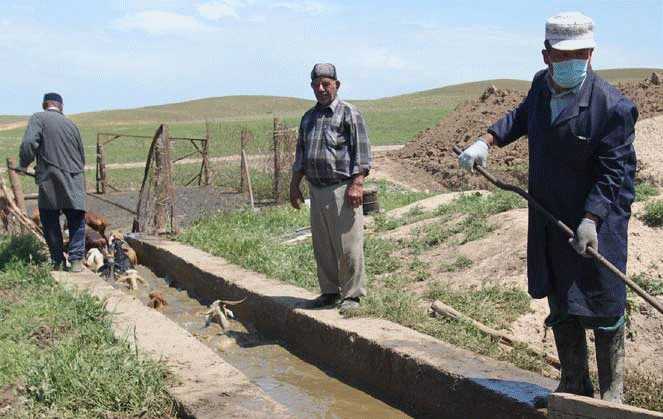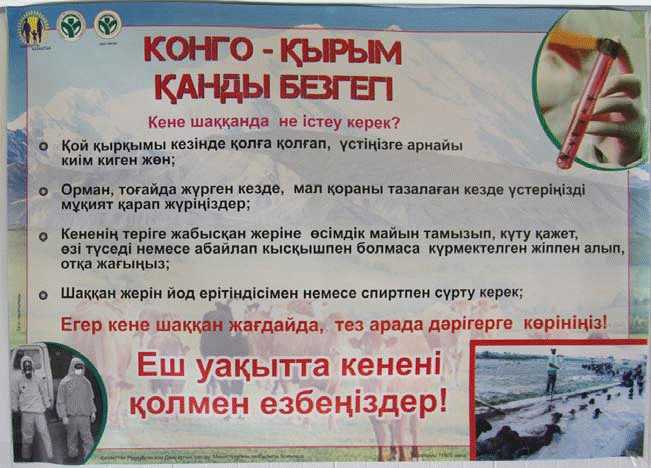Global Disease Detection Program: Kazakhstan and Central Asia

To prevent Crimean-Congo Hemorrhagic Fever, herders in rural Kazakhstan work with Ministry of Health field staff to disinfect goats through a bath with an acaricide, a substance that kills ticks and mites.
The Centers for Disease Control and Prevention (CDC) has collaborated with Ministries of Health in Central Asia since 1995 to better recognize and respond to serious public health threats. This alliance has improved laboratory capability for influenza and other communicable diseases, built surveillance systems for acute infectious respiratory illness, and strengthened health institutions at the national, regional, and local levels through training in field epidemiology and outbreak response.
In 2008, in coordination with country partners, CDC established a Global Disease Detection (GDD) Regional Center based in Kazakhstan, designated to work across five Central Asian countries: Kazakhstan, Kyrgyzstan, Tajikistan, Turkmenistan, and Uzbekistan.
Responding to Health Threats
The Center works with the Ministries of Health of the five republics to enhance local public health ability to contain and control infectious diseases, improve radiation safety, and counter the potential for bioterrorism. Assistance offered through the Center has helped contain outbreaks of typhoid, botulism, human influenza (including 2009 H1N1 influenza), and Crimean-Congo hemorrhagic fever.
Building Disease Detection and Response Capacity
The Center supports national and global public health security by building capacity to implement the revised International Health Regulations (IHR), and support the U.S. government’s Global Health Security Agenda.

Posters warning of ticks and Crimean-Congo Hemorrhagic Fever are prominent in endemic areas of Kazakhstan.
Using the revised IHR as an organizing framework, the Center helps develop regional ability to detect and contain outbreaks at their source, building up local resources with combined expertise in:
- Emerging infectious disease detection and response
- Field epidemiology and laboratory training
- Pandemic influenza preparedness and response
- Laboratory systems and biosafety
- Zoonotic disease investigation and control
- Health communication and information technology
Connecting Resources
The Center is founded on strong regional partnerships and cooperation between U.S. and international agencies, all working to detect and respond to infectious disease threats.
For instance, in 2009, a clinical protocol developed through the Center establishing sentinel surveillance at pediatric infectious disease hospitals in Kazakhstan for bacterial meningitis was approved by the Naval Medical Research Unit (NAMRU-3) in Cairo, Egypt, and by CDC programs in Atlanta.
Making a Regional Impact
From 2006-2015, the GDD Center in Central Asia has supported:
- Effective response to over 100 outbreaks in three countries, including Crimean-Congo hemorrhagic fever, anthrax, measles, and typhoid fever
- Detection of seven pathogens new to countries within the region
- Establishment of 19 new laboratory diagnostic tests
- Graduation of over 80 future global health leaders as part of the two-year Field Epidemiology Training Program, 85% of whom hold influential positions in their government’s Ministry of Health
- Training of over 5,000 public health officials from eight countries in short-term public health exercises, including epidemiology and laboratory, all hazards preparedness, and risk communication
- Page last reviewed: April 4, 2016
- Page last updated: April 4, 2016
- Content source:


 ShareCompartir
ShareCompartir